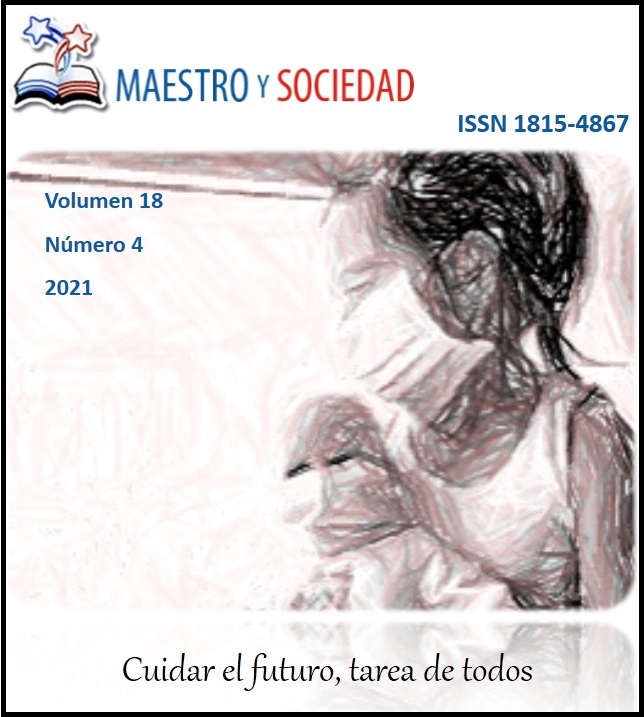Evaluation of antioxidant activity of five ecotypes of Peach palm
Array
Keywords:
Bactris gasipaes, Peach palm, AntioxidantsAbstract
The objective of this work was to evaluate the antioxidant activity of the pulp and roots of five peach palm ecotypes grown in the INIA-Loreto germplasm bank, from two basins of the Tigre river (203.3, 204-1 and 213-2), and from the Napo River (174-3 and 173-2). The evaluation of the antioxidant activity was carried out by means of the free radical sequestration of DPPH. According to their morphological characteristics, the palms from the Tigre river would be from the Mesocarpa race and those from the Napo river, from the Macrocarpa race. The best antioxidant activities are observed in the roots of ecotypes 174-3 and 203-3.
References
2. Andrade, J., Pantoja, L., & Maeda, R. (2003). Melhoria do rendimento e do proceso de obtenção da bebida alcoólica de pupunha (Bactris gasipes Kunth). Ciencia y Tecnología Alimentaria, 23, 34-38.
3. Araujo, M.E., Machado, N.T., França, L., & Meireles, M.A. (2000). Supercritical extraction of pupunha (guilielma speciosa) oil in a fixed bed using carbon dioxide. Journal Brazilien of Chemistry, 17, 297-306.
4. Arckoll, D.B., & Aguiar, P.J. (1984). Peach palm (Bactris gsiopeas H.b.K.) a new source for vegetable oil from the wetr tropical. Journal of Science Food, 35, 520-526.l
5. Calzada, J. (1986). Aprovechamiento industrial del pejibaye (Bactris gsipaes). CIPRONA
6. Camacho, V.E. (1969). El pejibaye como un alimento potencial de gran importancia para las familias campesinas de los trópicos americanos. Proceeding of the tropical region. American Society for Horticultural Sciences, 13, 275-284.
7. Camacho, V.E. (1972). El pejibaye (Guilielma gasipaes). Instituto Interamericano de Ciencia Agrícolas.
8. Chávez, J.M., Pechnick, E., & Siqueira, R. (1949). Valor nutruitivo de frutos brasileiros. Acta. Brasileña Nutricional 8(3), 205-43.
9. Clement, C., De Cristo-Araújo, M., Coppens d’Eeckenbrugge, G., Des Reis, V.M, Lehnebaht, R., & Picanço-Rodrigues, D. (2017). Origin and Dispersal of Domesticated Peach Palm. Frontiers in Ecological Evolution 5(148), 1-19.
10. Clement, C.R. (1985). Analysis of the descriptors lists and proposal for a new minimum field descriptor lists. EcoPress.
11. Clement, C.R. (1987). Pupunha: Uma árvore domesticada. Ciencia Hoje, 5(29), 43-49.
12. Clement. C.R. (1988). Domestication of the pejibaye palm (bactris gasipaes) past and present. Advances in Economic Botany, 6, 155-174.
13. Dean. R.T., Stocker, R., & Davies, M.J. (1997). Biochemistry and pathology of radical-mediated protein oxidation. Biochemistry Journal, 324, 1-18.
14. García, D.E., Sotero, V., & Lessi, E. (1998). Caracterización de la fracción lipídica de tres razas de pijuayo (Bactris gasipaes H.B.K.). Folia Amazonica, 9, 1-2.
15. Gómez da Silva, W., & Amelotti, J.G. (1983). Composizione della sostanza grassa del fruto di Guilielma speciosa (Pupunha). Revista Italiana delle Sostanze Grasse, 60, 767-770.
16. Gutteridge, J.M.C., & Halliwell, B. (1994). Antioxidants in nutrition, health, and disease. Oxford Press.
17. Hammond, E.G., Pan, W.P., & Mora Urpi, J. (1982). Fatty acid composition and gliceride structure of the pejibaye palm mesocarp and oil. Revista Biología Tropical, 30(1), 91-93.
18. INACAL. (2020). Frutos de palmera. Pijuayo. Requisitos. Norma Técnica Peruana. Lima Ediciones.
19. Johannessen, C.L. (1967). Pejibaye palm: physical and chemical anlysis of fruit. Economía y Botánica, 21(4), 371-378.
20. Lees, D.H., & Francis, F.J. (1972). Standarization of pigment analyses in cranberries. Hort Science, 7 (1), 83-94.
21. Maeda, R.M., Pantoja, L., Yuyama, L., & Chaar, J. (2006). Determinaçao da formulação e caracterização do néctar de camu camu. Ciencia y Tecnología Alimentaria, 26(1), 70-74.
22. Mc Donald, S., Prenzler, P.D., Autolovich, M., & Robards, K. (2001). Phenolic content and antioxidant activity of olive oil extracts. Food Chemistry 73, 73-84.
23. Mora Urpi, J., Vargas, E., Lopez, C.A., Villariana, M., Allon, G., & Blanco, C. (1982). El pejibaye. Editorial de la Universidad de Costa Rica.
24. Pasquel, A., Del Castillo, A., Sotero, V., & García, D. (2002). Extracción del aceite de la cáscara de Bactris gasipaes H.B.K. usando dióxido de carbono presurizado. Revista Amazonica de Investigación Alimentaría, 2(1), 1-14.
25. Pasquel, A., Díaz, E., Mancini Filho, J., & Torres, R. (2005). Extracción de aceite de la pulpa del fruto de Bactris gasipaes HBK (pijuayo) usando dioxide de carbono presurizado. Revista Amazonica de Investigación Alimentaria, 3(1-2), 65-77.
26. Patiño, V.M. (1958). El cahipay o pijibay y su papel en la cultura y en la economía de los pueblos indígenas de America intertropical II. América Indígena 184, 299-332.
27. Sandoval, M., Charbornnet, R.M., Okuhama, N., Roberts, J., Krenova, Z., Trenacosti, A.M., Miller, M.J.S. (2000). Cat’s claw inhibits TNFα Production and Scavenges Free Radicals: Role in Cytoprotection. Free Radio Biology Medicine, 29, 71-78.
28. Serruya, H., Benites, M.H., & Da Rocha, G.N. (1980). Analise dos óleos dos frutos de duas palmáceas. Quimicca da Amzonia, 7, 34-46.
29. Sotero, V., Garcia, E., & Lessi, E. (1996). Bebida fermentada a partir de pijuayo parámetros y evaluación. Folia amazônica, 8(1), 5-18.
30. Tanchivia Flores, E. (1992). Germinación de Pijuayo por el método de embolsado. Lima Press.
31. Taylor, A. (1993). Cataract: relationship between nutrition and oxidation. Journal of American Collection of Nutricion, 12, 138-146
32. Valls, J., Lampreave, M., Nadal, M., & Arola, L. (2000). Importancia de los compuestos fenólicos en la calidad de los vinos tintos de crianza. Alimentation, Equipos y Tecnologia, 19(2), 119-124.
33. Zapata, A. (1972). Pejibaye palm from the pacific coast of Colombia, a detailed chemical analysis. Economía y Botánica 26(2), 156-159.
Published
How to Cite
Issue
Section
License
This journal provides immediate open access to its content, based on the principle that offering the public free access to research helps a greater global exchange of knowledge. Each author is responsible for the content of each of their articles.



























 Universidad de Oriente
Universidad de Oriente 